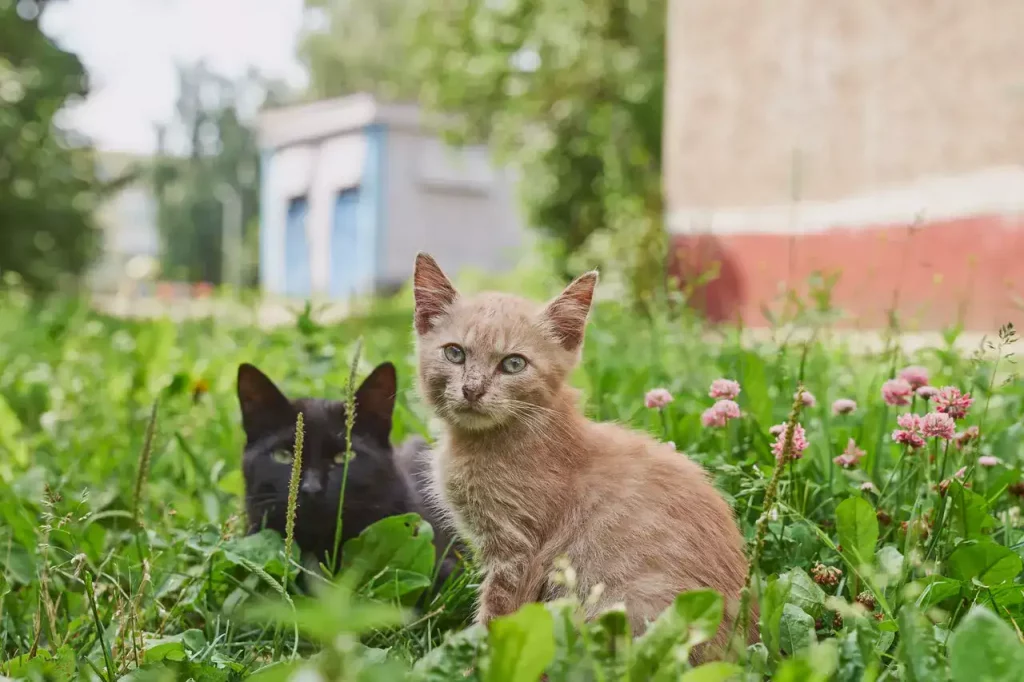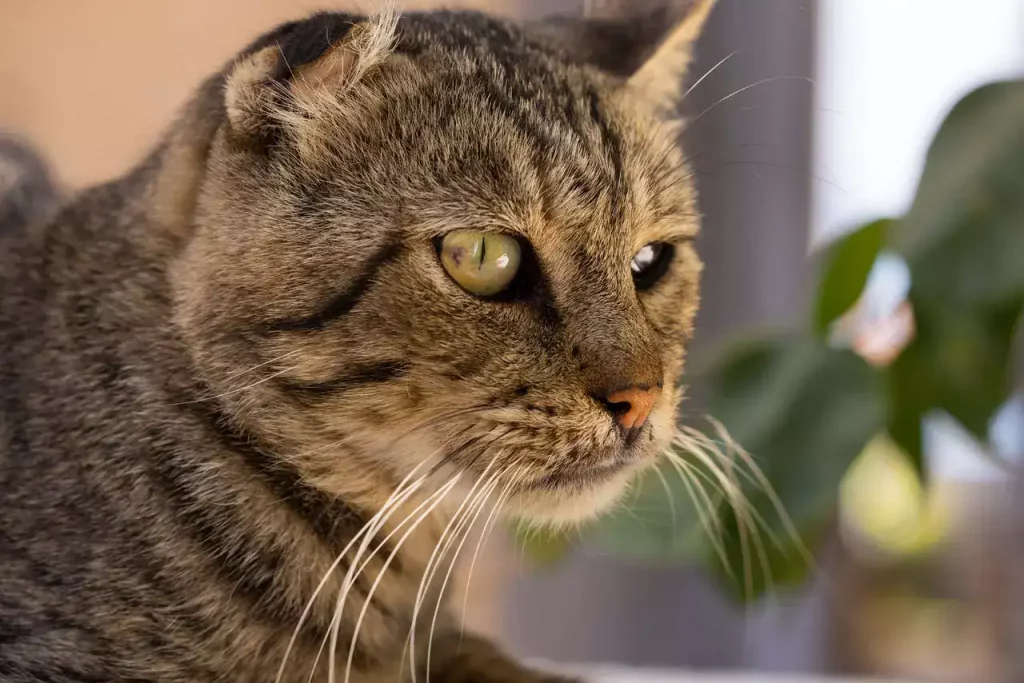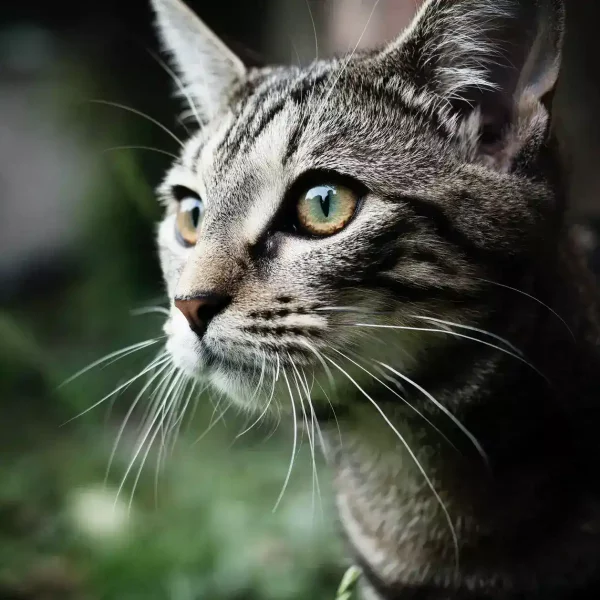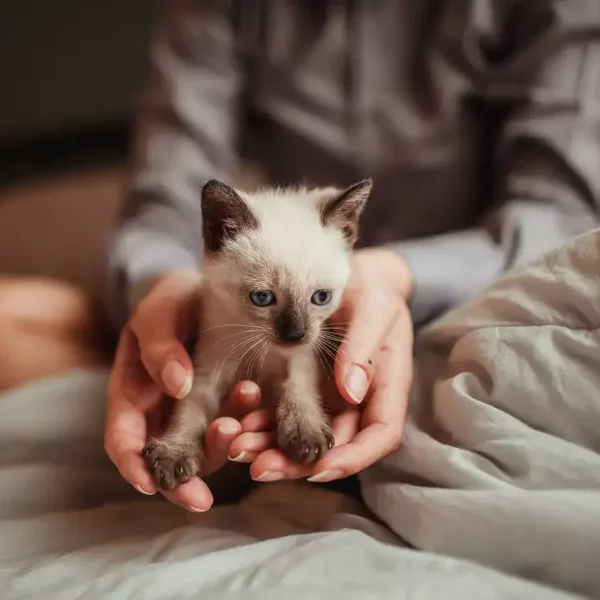Without dominant or territorial traits, cats can often find themselves in situations where they are dominated and bullied by other cats, be it in the home or elsewhere. This can even lead to cats becoming depressed or anxious if they are unable to act normally and defend themselves or protect their owner and possessions.
As a result, you will often you will see even the most mild-mannered of cats, trying to show dominance over another. And it’s not always problematic… but you might have to worry if it leads to aggressive behavior, so here’s what to look for.
How does a cat show dominance over another cat?
There are several ways in which cats show dominance over other cats. In most cases, spotting this behavior is relatively simple. However, before we explain what these dominant behaviors are, we should clarify that there is another category closely related to dominance – submissive behavior.
Submissive cats will often display behavior that is intended to indicate to other cats that they are not a threat. For example, they may back off and allow other cats to take their food or treats, turn away when other cats stare at them, or roll on their backs and show their belly.

In general, most cats fall somewhere between the two: there is no such thing as a purely dominant or submissive cat. In addition to this, many cats will alter their behavior depending on how they feel around different groups of their species.
For example, a smaller cat may act dominant around other small cats yet act submissive around larger breeds.
1. Baring of teeth, snarling, and hissing
Cats will show their dominance in a plethora of varying ways. However, most commonly, they will snarl, hiss, or even growl at other felines that venture too close to their food, favorite toy, or territory.
2. Guarding their owner
As well as this, they may even begin to guard their owner, refusing to allow other cats near without lunging at or biting them.
3. Staring down the other cat
Additionally, some cats will stare at the other cats in an effort to get other felines to back down or to warn them to stay away. At times, prolonged eye contact between cats may indicate that a fight is about to occur, and as such, you should be careful to separate them before this takes place.
Similarly, cats will often stand stock-still or move very slowly alongside this eye contact behavior.
4. Standing over another cat
When interacting with submissive cats, dominant cats will often attempt to mount or otherwise stand directly above them as they roll on their back to display their bellies.
In most cases, this will not lead to a confrontation, however, you should try and discourage this behavior when possible.
If left unaddressed, this may become a habit for your cat, potentially leading to them mounting other cats whilst on walks or during playtime with random felines in the park.
Therefore, a delicate balance is needed for cat owners to address their furry companion’s behavior correctly.
First and foremost, it is important that we recognize the signs of when our cats are acting dominant towards other felines and then act accordingly depending on the situation.
Why is dominant behavior so common in cats?
One of the reasons so many cats show dominance over other cats is because they are naturally dominant (even at an early age) and has been installed in them from birth.
Whilst nursing, young kittens will often compete with their siblings over who has first access to their mother’s milk. Naturally, the most dominant of these kittens will often come out as the victor, pushing past their brothers and sisters to gain the best position to nurse.
Although rarely the case nowadays (due to the guiding hand of responsible pet parents), kittens in the wild would regularly perish if they were unable to drink enough milk to fatten up and survive harsh weather, low temperatures, and other serious dangers.
Therefore, over hundreds of years, this has naturally led cats to exhibit some domineering behavior towards other cats, even from kittenhood.

Moving on, there is no doubt that many of us will have heard of the fascinating pack dynamics of wolves.
Through intense study of captive wolves, animal behaviorists, such as the famous Rudolph Schenkel, came to the conclusion that hierarchies existed in wolves and that these instinctual traits could also be applied to our domesticated companions as well.
However, despite popular belief that our cats can be organized into alphas, omegas, betas, depending on their personality traits or behaviors, there is growing evidence indicating that this is not the case.
Instead, it is likely that the presence of dominant behavior is very much dependent on the breed of the cat, as well as the environment it has spent its life growing up in.
For example, cats who are coddled too much or allowed to roam around freely without any type of boundaries are more likely to act dominant or aggressive to both their owners and other cats. Certain breeds are prone to showing domineering type behavior due to the traits installed in them through numerous years of selective breeding.
Should you allow your cat to act dominant over another cat?
According to many feline experts, dominant behavior in cats is not something that should be taken lightly, especially if it happens on a regular basis.
Despite this, many cat show dominance when living with other felines without any major incidents occurring. For example, it is not unusual for felines to display small signs of dominance by shifting their body or positioning themselves in subtle ways.
If you own a large pack of cats , there will probably be one cats who is slightly more dominant than the others, and so long as they are well trained, this will usually cause no issues.
However, it is worth noting that you should never encourage or reward dominant behavior, especially if it shows any sign of developing into aggressive behavior in the future, or if it is a constant occurrence between cats in the home.
Furthermore, there is always an increased risk that a cat prone to dominance may get into a serious fight with another cat or bite its owner when its problematic behavior is challenged.
Likewise, there is also the added risk that extremely dominant cats may act aggressively towards small animals or children if this trait is left unaddressed.
Sadly, many cat owners unknowingly contribute to their cat’s dominant behavior by failing to address the issue or by refusing to train them whilst they are still young.
Unfortunately, without intervention, many cat’s dominant traits will gradually escalate as they get older, causing them to behave unpredictably, often showing increased signs of aggression towards both humans and pets.
Therefore, you should always make the effort to train your cat whilst they are still a kitten or young adult cat – otherwise they will always trying to show dominance over other cats and this could result in clashes.
How to stop a cat from acting dominant over another cat
If you want to stop your cat from acting dominant over other cats all the time, there a few methods you should attempt.
Firstly, you must implement a few boundaries and rules for your cat to follow at all times. For example, they should always be discouraged from approaching any other cats in the house whilst they are eating (the same applies to toys and other objects).
Similarly, they must also be taught not to growl or snarl when people or other animals approach their food.
Additionally, you should also identify any other bad behaviors they could have and begin to eliminate them over a period of time. For example, it is quite common for cats to refuse to get off the sofa or ignore your calls for them to sit or lie down.
Although this may seem innocent, this sort of behavior can quickly spiral into outright disobedience. With careful training and the use of treats, the majority of cats will eventually lose a lot of their dominating traits.
Conclusion
Cats are territorial creatures at the best of times, and this can affect many of their day-to-day behaviors. In the wild, cats primarily relied on their instincts to survive the brutal environment they lived in. Without this ingrained behavior, our cat’s feline ancestors would have struggled to procreate and eventually died out entirely.
However, for modern-day cat owners, these territorial instincts can often prove troublesome, especially when they are displayed in non-suitable environments, such as in the home or at the local cat park.
Without being addressed correctly, territorial dominance can quickly turn into aggressive and dangerous behaviors and put a strain on the relationship between owner and cat.



Leave a Comment